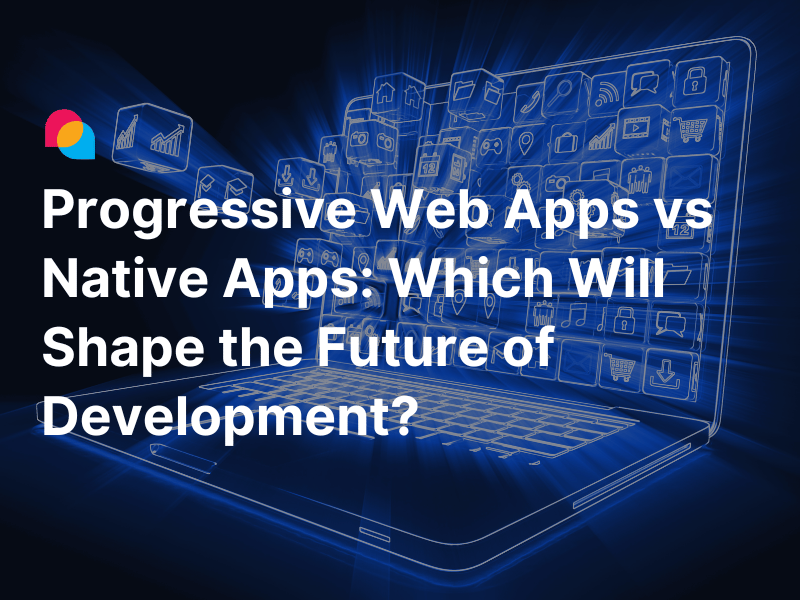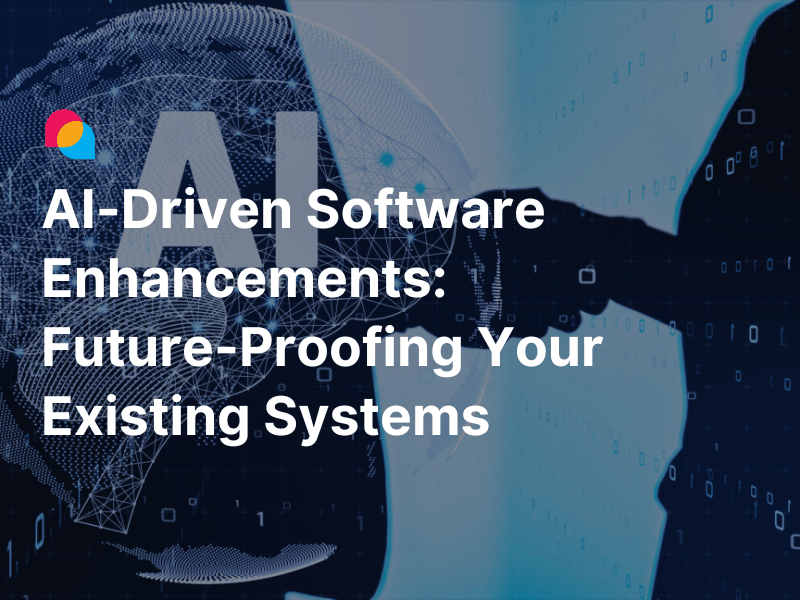Introduction to Serverless Architecture
Serverless architecture is revolutionizing the way software projects are developed, deployed, and maintained. As businesses strive for greater efficiency and scalability, understanding the impact of serverless architecture becomes crucial. This article delves into the key aspects of serverless computing, its evolution, and its profound effects on software projects.
Definition and Key Concepts
What is Serverless Architecture?
Serverless architecture refers to a cloud computing model where the cloud provider dynamically manages the allocation and provisioning of servers. Despite its name, serverless does involve servers; however, developers do not have to manage them. Instead, they rely on Function as a Service (FaaS) and Backend as a Service (BaaS) to run and scale their applications.
Key Terms and Definitions
- Function as a Service (FaaS): A serverless computing model that allows developers to execute code in response to events without managing servers.
- Backend as a Service (BaaS): A cloud service model that provides backend functionalities like databases, authentication, and storage, managed by the provider.
- Cold Start: The latency experienced when a serverless function is invoked for the first time or after being idle, as the infrastructure needs to be provisioned.
Current Trends and Adoption
Industry Adoption Rates
Serverless architecture has seen widespread adoption across various industries, from startups to large enterprises. Companies are leveraging serverless solutions to achieve faster time to market, reduce costs, and scale applications efficiently.
Case Studies of Companies Using Serverless Architecture
- Netflix: Utilizes AWS Lambda for real-time data processing and automated backups, enhancing their content delivery and operational efficiency.
- Coca-Cola: Uses serverless computing to manage vending machine transactions and monitor inventory, improving customer experience and supply chain management.
- Airbnb: Employs serverless architecture for data transformation and processing, optimizing their booking platform and user interactions.
Core Components of Serverless Architecture
Function as a Service (FaaS)
FaaS is a core component of serverless architecture that allows developers to execute functions in response to events. This model eliminates the need for server management, providing automatic scaling and pay-as-you-go pricing.
Explanation of FaaS
FaaS enables developers to write individual functions that are triggered by specific events, such as HTTP requests or database changes. These functions run in stateless compute containers, automatically scaling based on demand.
Major FaaS Providers
- AWS Lambda: Offers robust integration with other AWS services, making it a popular choice for building serverless applications.
- Google Cloud Functions: Provides seamless integration with Google Cloud services and supports various programming languages.
- Azure Functions: Integrates well with Microsoft's ecosystem and offers features like Durable Functions for orchestrating complex workflows.
Backend as a Service (BaaS)
BaaS provides pre-built backend services, allowing developers to focus on frontend development and business logic. It includes services like databases, authentication, and cloud storage, managed by the provider.
Overview of BaaS
BaaS platforms handle common backend functionalities, reducing the need for server-side code. This approach accelerates development cycles and simplifies the maintenance of backend infrastructure.
Popular BaaS Providers
- Firebase: Google’s BaaS platform that offers real-time databases, authentication, and hosting for web and mobile applications.
- AWS Amplify: Provides a suite of tools and services for building scalable mobile and web applications, integrating with other AWS services.
- Parse: An open-source BaaS platform that offers a range of backend services, including databases, push notifications, and cloud code.
Benefits of Serverless Architecture
Cost Efficiency
Serverless architecture reduces costs by eliminating the need for server management and providing a pay-as-you-go model. Businesses only pay for the compute resources they use, leading to significant savings, especially for applications with variable workloads.
How Serverless Reduces Costs
By offloading server management to the cloud provider, businesses save on infrastructure costs, maintenance, and staffing. The pay-as-you-go model ensures that resources are allocated efficiently, reducing waste and optimizing spending.
Pay-as-You-Go Model Explained
In the pay-as-you-go model, users are billed based on the number of requests and the duration of function execution. This model aligns costs directly with usage, making it an economical choice for applications with fluctuating demands.
Scalability and Flexibility
Serverless architecture offers automatic scaling capabilities, enabling applications to handle varying loads without manual intervention. This flexibility ensures optimal performance and resource utilization, regardless of traffic spikes.
Automatic Scaling Capabilities
Serverless platforms automatically scale functions in response to incoming requests. This means that as traffic increases, additional compute resources are provisioned to handle the load, and as traffic decreases, resources are scaled down.
Adapting to Variable Loads
The ability to scale automatically makes serverless architecture ideal for applications with unpredictable or seasonal traffic patterns. Businesses can maintain high performance without over-provisioning resources.
Reduced Operational Complexity
By eliminating server management tasks, serverless architecture simplifies DevOps practices and reduces operational complexity. Developers can focus on writing code, while the cloud provider handles infrastructure concerns.
Eliminating Server Management
Serverless platforms manage the underlying infrastructure, including servers, operating systems, and networking. This offloading of tasks allows development teams to concentrate on delivering features and functionality.
Simplified DevOps Practices
With serverless architecture, DevOps teams can streamline their workflows, leveraging automated deployment and monitoring tools. This simplification reduces the time and effort required to maintain applications, improving overall efficiency.
Faster Time to Market
Serverless architecture accelerates development cycles by enabling rapid prototyping, continuous deployment, and iterative development. This agility allows businesses to bring products to market faster and respond to changing requirements swiftly.
Accelerating Development Cycles
The modular nature of serverless functions facilitates quick development and testing. Developers can iterate on individual components without impacting the entire application, speeding up the development process.
Continuous Deployment Benefits
Serverless platforms support continuous deployment, enabling automatic updates and rollbacks. This capability ensures that new features and bug fixes can be deployed rapidly and reliably, maintaining high application availability.

Challenges and Limitations of Serverless Architecture
Cold Start Latency
One of the primary challenges associated with serverless architecture is cold start latency. When a serverless function is invoked after a period of inactivity, it may experience a delay as the underlying infrastructure is provisioned. This latency, known as a cold start, can affect the performance of applications, particularly those requiring low-latency responses.
Understanding Cold Starts
A cold start occurs when a serverless function is called for the first time or after being idle, necessitating the startup of a new container. This process involves loading the runtime environment and the function's code, which can introduce delays. Cold starts are more pronounced in functions with large dependencies or complex initialization logic.
Strategies to Mitigate Cold Start Issues
To minimize the impact of cold starts, developers can employ several strategies:
- Warm Up Functions: Periodically invoke functions to keep them warm and avoid cold starts.
- Provisioned Concurrency: Some cloud providers offer provisioned concurrency, which keeps a specified number of function instances warm and ready to handle requests.
- Optimized Code: Reduce initialization time by optimizing the function code and minimizing dependencies.
Vendor Lock-In
Another significant concern with serverless architecture is vendor lock-in. Relying heavily on a specific cloud provider's services and APIs can make it challenging to migrate applications to other platforms, limiting flexibility and increasing dependency on the provider.
Risks and Concerns of Vendor Dependence
Vendor lock-in can lead to several risks, including:
- Limited Portability: Applications tightly coupled with a specific provider's services may require significant rework to migrate.
- Pricing Changes: Dependence on a single provider makes businesses vulnerable to changes in pricing and service availability.
- Service Disruptions: Outages or disruptions in the provider's services can impact the availability of serverless applications.
Best Practices to Avoid Lock-In
To mitigate vendor lock-in, developers can adopt best practices such as:
- Abstraction Layers: Use abstraction layers or frameworks that support multiple cloud providers.
- Standardized APIs: Design applications using standardized APIs and avoid proprietary features.
- Modular Design: Develop applications in a modular fashion, allowing for easier replacement of components if needed.
Debugging and Monitoring Difficulties
Serverless applications pose unique challenges for debugging and monitoring. The distributed nature of serverless functions and the lack of direct access to the underlying infrastructure can complicate the identification and resolution of issues.
Challenges in Debugging Serverless Applications
Debugging serverless applications can be difficult due to:
- Ephemeral Environments: Serverless functions run in short-lived environments, making it challenging to reproduce issues.
- Lack of Access: Limited access to the infrastructure and runtime environment can hinder troubleshooting efforts.
- Complex Tracing: Tracking the flow of data and execution across multiple functions and services can be complex.
Tools and Techniques for Effective Monitoring
To effectively monitor and debug serverless applications, developers can use various tools and techniques:
- Distributed Tracing: Implement distributed tracing to track requests across multiple functions and services, providing visibility into the application's execution flow.
- Logging: Utilize centralized logging solutions to collect and analyze logs from serverless functions.
- Monitoring Services: Leverage cloud provider monitoring services, such as AWS CloudWatch, Google Cloud Monitoring, and Azure Monitor, to gain insights into function performance and health.
Practical Applications of Serverless Architecture
Web and Mobile Applications
Serverless architecture is well-suited for building scalable web and mobile applications. It enables developers to create APIs, handle real-time data processing, and manage backend services without worrying about server management.
Data Processing and Analytics
Serverless architecture can simplify data processing and analytics by leveraging cloud-native tools and services designed for these purposes. It supports both stream and batch processing, making it versatile for various data-driven applications.
Internet of Things (IoT)
Serverless architecture is particularly effective for managing and processing IoT data. It provides the scalability and flexibility needed to handle the massive amounts of data generated by IoT devices.
Impact on Software Development Processes
Changes in Development Workflows
Serverless architecture introduces changes to traditional development workflows, emphasizing modularity, event-driven design, and automation. These changes can enhance productivity and streamline development processes.
Shifts in Development Practices with Serverless
- Function-Centric Development: Developers focus on writing individual functions that handle specific tasks, promoting modularity and reusability.
- Event-Driven Design: Applications are designed to respond to events, such as API calls or database changes, enabling real-time processing and automation.
- Infrastructure as Code (IaC): Use IaC tools like AWS CloudFormation or Terraform to define and manage serverless infrastructure, ensuring consistency and repeatability.
Integration with Continuous Integration/Continuous Deployment (CI/CD)
Serverless architecture integrates seamlessly with CI/CD practices, enabling automated testing, deployment, and scaling. This integration enhances development agility and reduces time to market.
Collaborative Development
Serverless architecture fosters collaborative development by enabling teams to work on independent functions and services. This approach promotes parallel development and reduces dependencies.
Enhancing Team Collaboration
- Decoupled Services: Teams can develop, deploy, and maintain individual functions and services independently, reducing coordination overhead.
- Shared Resources: Utilize shared repositories, documentation, and monitoring tools to facilitate collaboration and knowledge sharing.
Security Considerations in Serverless Architecture
Common Security Challenges
Despite its advantages, serverless architecture introduces unique security challenges that developers must address to ensure the safety and integrity of their applications.
Identifying Potential Security Risks
Serverless applications can face several security risks, including:
- Insecure Dependencies: Serverless functions often rely on third-party libraries and dependencies, which can introduce vulnerabilities if not properly managed.
- Data Exposure: Improper handling of data can lead to exposure of sensitive information.
- Misconfigured Permissions: Misconfigurations in permissions and access controls can result in unauthorized access to resources.
- Denial of Service (DoS): Serverless applications can be vulnerable to DoS attacks if not properly protected, as they may automatically scale in response to malicious traffic, leading to excessive resource consumption.
Best Practices for Securing Serverless Applications
To mitigate these risks, developers should follow best practices for securing serverless applications:
- Secure Code: Write secure code by following best practices for coding, such as input validation, sanitization, and using secure libraries.
- Least Privilege Principle: Apply the principle of least privilege by granting minimal permissions necessary for functions to operate.
- Regular Audits: Perform regular security audits and vulnerability assessments to identify and fix potential issues.
- Environment Segregation: Use separate environments for development, testing, and production to reduce the risk of accidental exposure and unauthorized access.
Data Privacy and Compliance
Serverless applications must also adhere to data privacy and compliance requirements, especially when handling sensitive or personal data.
Ensuring Data Protection
- Encryption: Encrypt data at rest and in transit to protect it from unauthorized access.
- Access Controls: Implement robust access controls to ensure that only authorized users and functions can access sensitive data.
- Monitoring and Logging: Enable comprehensive monitoring and logging to detect and respond to security incidents promptly.
Meeting Industry Regulatory Requirements
- Compliance Standards: Ensure that serverless applications comply with relevant industry standards and regulations, such as GDPR, HIPAA, and PCI-DSS.
- Data Retention Policies: Implement data retention policies to manage the lifecycle of data, including its storage, processing, and deletion, in accordance with regulatory requirements.
Conclusion
Businesses should explore serverless architecture to take advantage of its benefits while being mindful of its challenges. By following best practices, optimizing performance, and staying informed about emerging trends, they can maximize the potential of serverless computing.
As serverless technology continues to evolve, it will play a critical role in shaping the future of software development. Embracing serverless solutions can help businesses stay competitive, innovate faster, and deliver exceptional user experiences.
References:
Serverless Computing in 2024: Generative AI & 5G Transform the Cloud - CloudComputing
The Rise Of Serverless Computing And Low/No-Code Applications - Forbes
The big opportunities in serverless computing - VentureBeat





